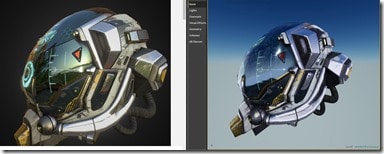Unreal recently started releasing preview versions of Unreal Engine 4.19 with some great new features and apparently one stealth one… glTF support. This is actually excellent news for the industry as a whole, as the current standards FBX and COLLADA or convoluted, proprietary or both. A good, game ready, cross platform, cross application open and
User vlbanco did an in-depth post on his experiences with the new format on the Unreal forums.
My tests have resulted in this:
Basic static mesh support works. Skeletal meshes and animations are not supported yet.Each of the objects in the scene will become a single static mesh in unreal. This is good for a modular pack, but very bad for complex multiobject files. An option to merge objects would be great (like in FBX import). This fails spectacularly if you try to import one of the complex models from https://sketchfab.com/features/gltf , like the unity robot model (he imports as a ton of tiny objects) The same happens with the drone mode;.
Interestingly enough, Blender export works by default, without any setup. There are no more scale ******** to deal with as with FBX, and also it will use the correct axis by default, so no flipped models or badly scaled models. Great improvement over FBX. It “Just Works”
All objects in the scene will import as static meshes, with their scale and position reset. If you have any scale or position at “object” level in blender, when importing into unreal this will be reset. An option to apply the scale/position would be great, but working around it is absolutely trivial.
Smooth groups export perfectly by default, exactly as they are with blender (no more import normals or not as with FBX). Another great improvement over FBX
Whole scenes cant be imported well, as every object will just become a separated static mesh centered at origin, but without the “scene hierarchy”. The importer having the option to create a blueprint that holds the scene information would be a huge plus, and would allow one to create a whole scene in blender and import it as 1 object into ue4.The material/texture import is a lot better than i expected, and its what makes this a superior format and workflow over FBX (for static meshes) right now. A blender cycles node tree will get completely translated to UE4, as long as it follows the roughness/metallic workflow. The fact that the importer already supports textures and recreates the material is awesome.
Do keep in mind, this is very much an experimental feature, but for many Blender artists, it’s already sounding like a superior experience. Let’s hope skeletal animations get added soon!
